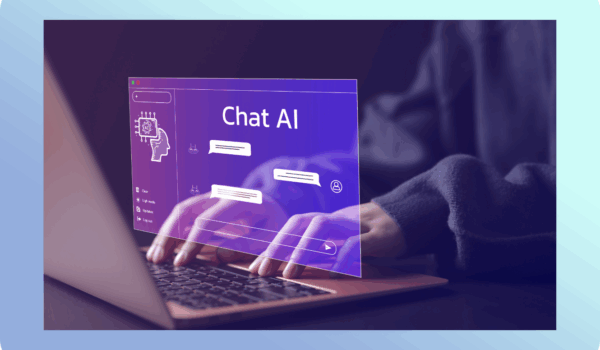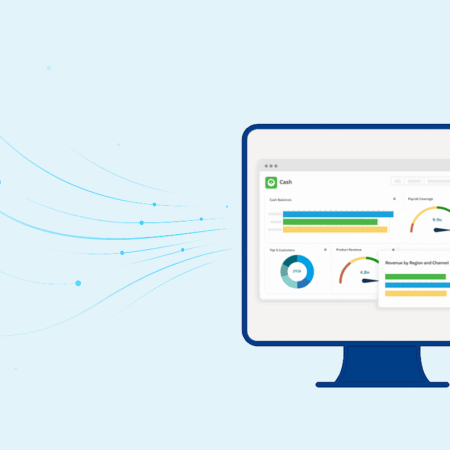
AI is moving into the core of accounting work faster than invoices pile up on an AP clerk’s desk. Use of AI in the finance function has more than doubled in the last year, with 72% of finance leaders currently employing AI (including generative and agentic AI) up from 34% last year, according to a report from Protiviti.
Companies are beginning to use AI in accounting to analyze transactions and flag anomalies in real time, apply policies and detect fraud with greater accuracy, and generate predictive insights for forecasting and planning. These applications go beyond automation, giving finance teams intelligence that adapts to their data and supports faster, more informed decisions.
At the same time, success with AI implementation is far from guaranteed. Despite $30–40 billion in enterprise investment in generative AI, 95% of corporate AI initiatives show no return, according to MIT’s Media Lab (via Forbes). Many pilots stall because the data AI needs is scattered across disconnected systems. When data is kept/located in multiple systems (like in stand-alone solutions or even on individual computers), results are unreliable and adoption slows. This makes it even more important to look at solutions that can be used immediately and are embedded where the data already lives.
Before diving into specific examples, it’s worth clarifying what we mean when we talk about AI in accounting—and how it differs from the automation tools many teams already use.
Automation vs AI
If your finance team uses automations, you might be wondering: Are we already using AI? Here’s the difference: Automation executes pre-set rules and workflows, while AI learns, adapts, and makes decisions in situations it wasn’t explicitly programmed for. In accounting, automation got us part of the way—sending reminders, routing approvals—but AI takes it further by predicting outcomes, learning patterns, and reasoning through ambiguity.
Understanding this distinction matters because it directly affects where and how AI can deliver value. And that brings us to a critical but often overlooked factor: data accessibility.
How AI uses data
It might sound obvious, but AI only works well if it has data that’s both easy to get to and reliable. The catch is that “easy and reliable” means having all your clean data in one place. If sales data lives in one system and accounting data lives in another, someone has to constantly pull it together, clean it up, and hope nothing gets lost in the shuffle. And when your information is scattered across different systems, AI can’t really take action without expensive add-ons—something most small and midsize businesses don’t have the budget for. In short, thinking about where data is located and how you want AI to help use it is an important consideration.
With that foundation in place, let’s look at how companies are putting AI to work in accounting today. The following examples show what’s currently available in the market and where businesses are seeing real impact.
Ramp: AI agents for expense review and policy enforcement
Ramp recently introduced its first set of AI agents, designed to support finance teams with routine expense review and policy enforcement. These agents are built to read a company’s expense policy, apply it consistently across transactions, and reduce the number of small, manual checks that typically slow down finance teams.
When employees submit expenses, Ramp’s agents automatically approve those that fall within policy, flag potential outliers, and escalate only the cases that require human judgment. The system provides explanations for each decision and learns from past approvals, giving finance teams transparency and a record of why a decision was made.
Early users report this automation reduces the amount of time staff spend on low-value reviews and allows them to focus on higher-level exceptions and strategy. Ramp notes its agents can catch significantly more out-of-policy transactions than manual reviews, while also answering employee questions about policy through existing channels like email or Slack.
The company has indicated this is the first stage in a broader roadmap, with plans to expand agents into procurement, reconciliation, and budgeting tasks.
Expensify: Checking expenses against policies
Expensify has integrated AI throughout its expense management platform to reduce manual work and improve accuracy. Its Concierge AI serves as an in-context assistant that can guide employees, enforce policies, and even submit or approve expenses directly within the app.
The system automates receipt capture by extracting details from photos, emails, or texted images, and then categorizes expenses using company policies and past behavior. Expenses are checked against policies in real-time, flagging issues before reports are approved. Expensify also applies AI to fraud detection, reviewing receipts line by line to identify prohibited purchases or altered documents.
Because the platform integrates with accounting systems such as QuickBooks, Xero, and Sage Intacct, approved expenses and reimbursements flow directly into the general ledger. For small and mid-sized businesses, this means less time spent on manual data entry and faster reimbursements, while finance teams gain more confidence that expenses are accurate and compliant.
Stripe: Fraud prevention in payments
Stripe applies AI across checkout, fraud prevention, billing, and authorization to optimize every stage of the payments lifecycle. Within its platform, Stripe Radar is the built-in fraud detection system, using machine learning trained on Stripe’s global payments network to identify and block suspicious activity in real time. In addition, Smart Retries, a feature within Stripe Billing, uses AI to automatically retry failed recurring payments at the times they are most likely to succeed, reducing involuntary churn. Stripe also applies AI models to improve authorization rates by predicting the best way to format and route transactions to card networks.
The AI finance app Cleo adopted Stripe Payments and Radar, leading to a 1.5% increase in repayment success, a 23% reduction in chargebacks, and a $15,000 per month savings through automated dispute handling. For SMBs, this shows how Stripe’s AI tools streamline payments while reducing risk and manual effort.
Avalara: Tax Compliance Automation
Avalara has expanded its compliance platform with Property Tax Managed Services (AvaMPT), a new offering that uses its Agentic AI Foundry to simplify property tax management. The service automates core tasks such as preparing returns, scheduling payments (via a partnership with Anybill), reviewing assessments, and generating compliance reports. AI models analyze prior-year filings and customer data to flag risks, identify potential overpayments, and ensure deadlines are met.
For finance teams, AvaMPT reduces manual data entry, helps avoid penalties, and eases staffing pressures by handling high-volume compliance work. Customers can scale between fully managed, co-sourced, or in-house models without disrupting historical data. Early adopters note faster filings, improved accuracy, and more confidence in managing hundreds of returns. For SMB and mid-market companies, Avalara’s AI-enabled property tax services offer a way to offload a traditionally manual and error-prone area of compliance.
ADP Roll: Conversational payroll
Payroll is another essential accounting function that has seen AI-driven innovation, particularly for small businesses that lack dedicated payroll staff. ADP’s “Roll” is a chat-based payroll app that allows users to process payroll through natural language commands rather than traditional software interfaces. Users can input instructions like “Run payroll for my hourly employees for this pay period,” and the system prompts for additional information as needed—such as changes in hours or new hires—before processing the payroll and calculating taxes.
Paylocity: Built-in AI assistant
Paylocity’s updated AI Assistant has shifted from answering questions to taking direct action across HR, payroll, and finance workflows. The system processes natural language queries to retrieve information and provide actionable links, while also surfacing relevant policy details—such as spending limits during expense approvals—to support compliance requirements.
QuickBooks: AI for small business bookkeeping
QuickBooks has added AI agents that take on a range of day-to-day finance and administrative work for small businesses. These agents handle tasks like categorizing transactions, reconciling accounts, and monitoring cash flow, while also supporting invoicing, payments, and forecasting. QuickBooks is also testing agents that assist with customer follow-up and project setup. The intent is to reduce the time owners and bookkeepers spend on manual entry and routine oversight, giving them more space to review results and plan ahead.
Note: When standalone solutions like QuickBooks are paired with Salesforce or another CRM, those AI features depend on integrations working seamlessly. If the data flow between systems breaks down, the AI has little context to draw from—limiting its effectiveness.
Certinia: Predictive forecasting
Certinia, formerly FinancialForce, has begun introducing AI agents across its platform as part of its 2025 summer release. Built on Salesforce’s Agentforce framework, the first two agents are focused on staffing and customer success.
The Staffing Agent helps professional services organizations reallocate resources when employees are unavailable. Instead of manually searching through assignments, managers can interact with the agent to receive a shortlist of qualified replacements and reassign work in minutes. Early adopters report this reduces what was once hours of effort to just a few minutes.
The Customer Success Agent is designed to automate routine preparation and follow-up for customer success managers. It can create case summaries, draft customer emails, generate task lists, and close out administrative work. This allows managers to cover more accounts without increasing headcount.
Certinia has indicated these two agents are the start of a broader rollout. The company is experimenting with dozens more, aiming to integrate AI more deeply into project management, financial planning, and customer success operations.
Note: Certinia’s primary market is professional services, so these AI use cases are designed with project-based organizations in mind rather than general accounting needs.
Accounting Seed: Embedded AI with immediate ROI
Furthering the advantage of having operational, sales, and accounting data all in one single location, SMBs using Accounting Seed are uniquely primed to take advantage of AI across the entire business. There’s no need to invest in costly integrations or wait on complex data matching. What does this mean? AI is immediately able to access all data grounded in Salesforce—which includes Accounting Seed; basically the AI can answer contextual questions about that business on day one.
Each Accounting Agent is designed to handle traditional accounting “busy work” while simultaneously maintaining audit trails as well as respecting desired security access.
Accounting Seed currently has four agents available:
- Bill Pay Agent: Optimizes cash flow by prioritizing payables, capturing early payment discounts, eliminating duplicate expenses, and preventing late fees.
- Collections Agent: Accelerates cash flow by tracking overdue invoices, sending dunning notices with payment links, and predicting payment risk based on customer history.
- GL Agent: Saves time by answering queries about transactions, automating posting/unposting, and helping close the books faster.
- Support Agent: Provides in-app guidance, answering “how-to” questions in real time using the Accounting Seed support library to accelerate learning and reduce disruptions.
Because Accounting Seed is 100% Salesforce-native, data flows seamlessly across the platform, ensuring that these agents can act instantly without costly integrations or data prep. Finance teams gain faster insights, more accurate processes, and the freedom to focus on strategy rather than busywork.
It also means avoiding one of the biggest pitfalls in AI adoption: failed pilots. With most enterprise AI projects never delivering returns, the advantage of Accounting Seed’s embedded approach is that AI agents are usable from day one of signing onto Salesforce + Accounting Seed—not months or years down the road.
Where AI in Accounting is headed
AI in accounting is moving quickly from concept to practice. Finance teams are already seeing measurable benefits—shorter close cycles, more accurate compliance, faster reimbursements, and better forecasting. But adoption is uneven, and many corporate pilots stall out because AI isn’t built into the systems where the data already lives. That’s why the next phase won’t be about chasing experiments, but about solutions that deliver value on day one.
For SMBs and mid-market companies, the opportunity lies in choosing AI that works within a unified platform, alongside the data and workflows teams already use. Those who take this approach will avoid the high failure rate of pilots and instead see immediate gains in reduced manual work, stronger compliance, and smarter decision-making.
Curious how this works in practice? Learn more about Accounting Seed’s AI Agents and how they support collections, payables, GL queries, and in-app guidance.
See Accounting Seed in action
See how accounting on Salesforce can eliminate the need for costly integrations—and silos of mismatched information—by sharing the same database as your CRM.



